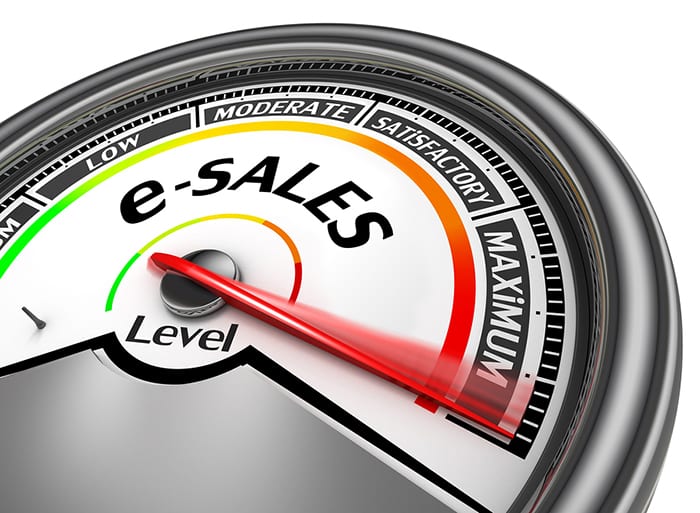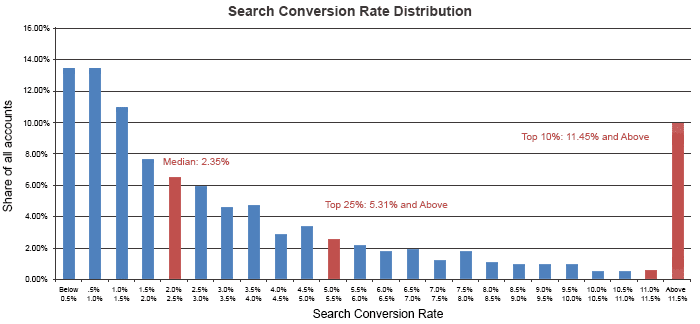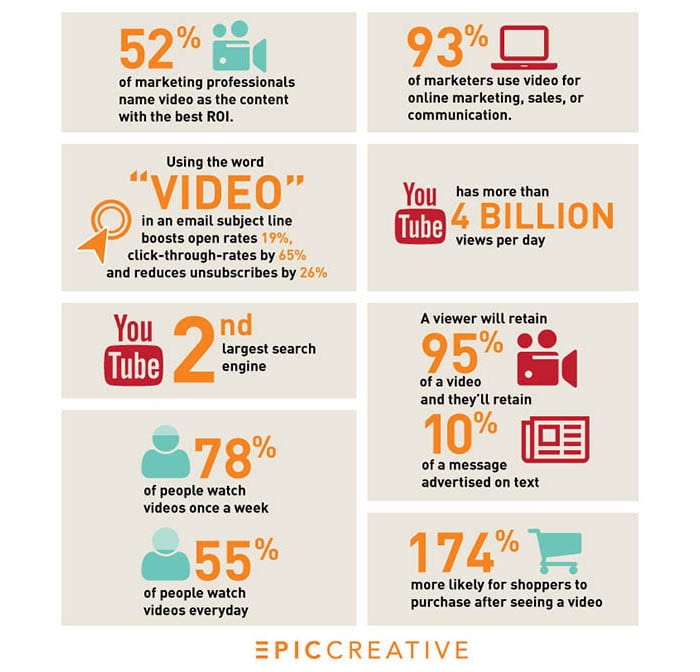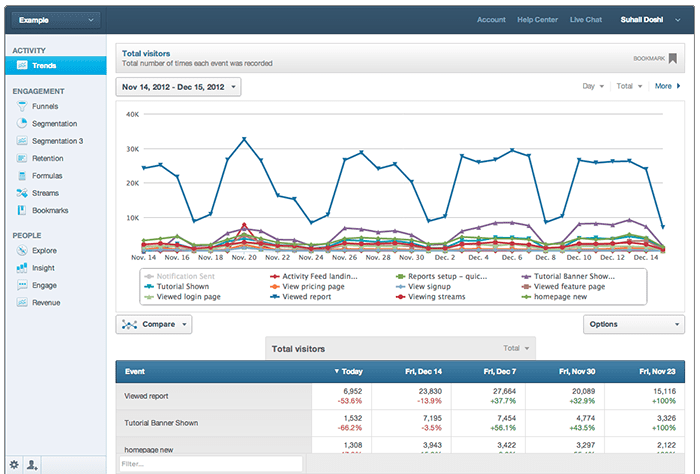9 Ways to Improve Average Ecommerce Conversion Rates

What can you do to improve conversion rates at your online store? Here are some helpful tips that can serve to give you a head start, so you can start reaping rewards from all that hard work and overtime you’ve been logging to get your store off the ground.

Improve Your Site Speed
One of the most commonly overlooked elements between conversions and prospective customers bouncing away from your online store without making a purchase is your website speed. According to Akamai, if your website does not load in two seconds or less, you stand to lose about 47% of your visitors. But just how much can site speed affect conversions?

As you can see from the chart above, just a one-second lag time with loading can cost you as much as 7% of your conversions. For every second that your site takes to load beyond two seconds, you stand to lose exponentially more conversions, measured at about 6.7% per second. Fortunately, you can make some simple changes to improve site speed and thereby also improve your conversion ratio. We’ve created complete guide to help you Improve Site Speed to Get More Conversions so you can get a head start.
Product Videos Improve Conversion Rates
A Forrester report finds that videos have an approximate value as compared to content: They are worth approximately 1.8 million words. Since consumers are unable to see the products that you are selling in person or touch them, you can help improve ecommerce conversions rates by instead featuring high-quality videos that showcase certain best-selling products instead.
 A recent report we published finds that that ecommerce videos have a 16.85% conversion rate? What’s more, 58% of brands trust retailers with videos more than others that don’t offer them. In addition to that, more than 96% of shoppers use videos to make a purchasing decision, and are 1.7 times more likely to convert when there is a product video present.
A recent report we published finds that that ecommerce videos have a 16.85% conversion rate? What’s more, 58% of brands trust retailers with videos more than others that don’t offer them. In addition to that, more than 96% of shoppers use videos to make a purchasing decision, and are 1.7 times more likely to convert when there is a product video present.
Tips on Making Effective Product Videos
- Minimize the length to under 30 seconds.
- Make sure you are engaging the viewer during the first 9 seconds.
- Be creative and consider using a professional service to create your video.
- Use models to showcase clothing and products for your shoppers.
- Create instructional videos for shoppers if selling related products.
- Show dimensions of products in videos.
- Explain complicated features of technical products in videos.
Here are 7 More Reasons to Consider Using Ecommerce Product Videos to improve conversions.
Enhance Customer Support
Customer support is one of the pillars of any ecommerce success story. This is true regardless of what sales channels you are selling on. Your customers want to be taken care of, and if you fail to adequately address their issues in a timely manner, you can’t expect to have customers for very long.
To improve customers support, Ruby Garage advises that you feature a searchable customer care page that addresses common website problems. Setting up a page that offers FAQs on common support issues can help you win over more customers from the start, and will help to increase average ecommerce conversion rates across the board.
Ruby’s garage advises that your customer care page cover topics that include: Order Issues, Payments/Promos/Gift Vouchers, Deliver Time, Returns & Refunds, Product & Stock, and Technical Support.
 Make Your Products Stand Out
Make Your Products Stand Out
One thing that many of the leading online stores share in common is that they make their products shine and truly stand out. Adding pop to your products can sometimes be as simple as updating your theme – this is especially true if you are using a storefront like Shopify, 3dcart or BigCommerce, all which offer robust and affordable aftermarket themes with quick installs.
Making your products stand out is half the battle in getting conversions. It starts with you making searching your site easy with simple navigation, nested products and easy to navigate menus. Make sure you add product recommendations to the mix, as well as feature a persistent shopping cart to appeal to the 56% of shoppers that leave items in the cart but later navigate away from the page only to come back again and forget what they had been shopping for, according to nopAccelerate.
Good product descriptions are not only properly optimized for SEO, so you can get rankings for your hard work (which amount to more sales), but also clearly describe the product and feature prominent bullet points underneath the description that summate the unique value proposition of the product to the prospective customer. To gain more insight into this, look at our related guide: 18 Ways to Add More “Wow” to Ecommerce.
Offer a Free Shipping Threshold
What is a free shipping threshold? It’s a price point that you set where shoppers qualify for free shipping. Did you know that about 65% of cart abandonment is directly tied to what you are charging for shipping? According to eConsultancy, four in five consumers want free shipping and see it as an important part of them choosing whether or not to buy the product from your store.
To improve your average ecommerce conversion rate, consider setting up a free shipping threshold that helps you break even on shipping or compensate for the cost of it by increasing the average order value. To help you better put this into motion, make sure you read our related guide: Boost Sales with a Free Shipping Threshold. It’s packed with helpful information that will show you why and how this is a primer for more conversions.
Use Digital Coupon Codes
Consider creating special offers and circulating digital coupons to help increase average ecommerce conversion rates. Given that more than 50% of your shoppers are using a mobile device, it’s hard to ignore the power of mobile couponing statistics in today’s one-click shopping ecommerce world. For that matter, also consider becoming a member and featuring offers on mobile couponing app services.
 According to Nielson, half of all mobile users are finding and redeeming these coupons from such apps, which means that this is a conversions treasure chest just waiting for your store to open up. With an estimated 25 million Americans alone redeeming these coupon codes monthly, the sky’s the limit as to how many sales you can directly tap into just by creating special offers every few weeks.
According to Nielson, half of all mobile users are finding and redeeming these coupons from such apps, which means that this is a conversions treasure chest just waiting for your store to open up. With an estimated 25 million Americans alone redeeming these coupon codes monthly, the sky’s the limit as to how many sales you can directly tap into just by creating special offers every few weeks.
Integrate Metric Analytics Software
What is metrics analytics software and how can it help to improve average ecommerce conversion rates? Services like MixPanel help you better understand the customer’s journey as they circumnavigate your website, leading either to a conversion, bouncing away or cart abandonment. Without this type of a solution in place, you’ll simply be guessing about the customer journey instead of understanding it and using this know-how to fine-tune your conversion funnel.

How can software like this help? MixPanel create automated insights that deliver invaluable information on your customers, including: Pinpoints that tell you why and how you are losing customers, engagement ratios, information collecting and much more. They also enable you to A/B test splash and landing pages, while helping you engage live customers during their journey. The end result: You’ll turbo-boost conversions.
Add Retargeting to Your Marketing Plan
A number of services currently offer retargeting programs. For example, services like AdRoll provide a user-friendly interface with lots of tracking options. You’ll need some creative materials to get your retargeting ads going, but you can either create those yourself or contract out the graphic design using services like UpWork.
Retargeting basically follows users as they bounce away from your site, advertising to them on the platforms they use the most, giving you second-chance sales opportunities.
How effective is retargeting? A quick look at the most recent retargeting statistics is telling:
- Users who are retargeted to are 70% more likely to convert.
- Display ads get a click-through rate of 0.07%; retargeted ads get a click-through of 0.7%.
- Retargeted ads have the potential to increase branded search exposure by more than 1,000%.
- 46% of online marketers believe that retargeting is grossly underused.
- 49% of major brands have now set aside specific budgets just for retargeting.
Become a Social Media Brand Ambassador
Social media should be your best friend when selling products online. The most recent social commerce statistics find that 5% of all online sales worldwide come from social media websites, with Facebook topping the cake as the dominating force, generating an estimated 85% of social referrals and conversions.
You also shouldn’t ignore sites like Pinterest, Instagram or Twitter along the way. To put this cash cow in better perspective, social commerce revenue through 2015 surpassed $30 billion, with experts predicting it will top $40 billion by 2020. It’s just money waiting to be grabbed by you.
 How effective is social shopping, and why should you be a social media brand ambassador? These current social commerce facts better illustrate how much the average ecommerce store gained just by being active on social media.
How effective is social shopping, and why should you be a social media brand ambassador? These current social commerce facts better illustrate how much the average ecommerce store gained just by being active on social media.
- Revenue uplift increased by 17.8%.
- Social sharing and purchases increased traffic by 8.5%.
- Social referrals resulted in 2.1 more visitors for websites.
- SEO rankings improved for over 90% of ecommerce stores due to social signals.
- Email campaigns saw a 63% increase in sales from social media.
- Facebook flash sales generated $17 in revenue, on average, per fan.
Share On:







